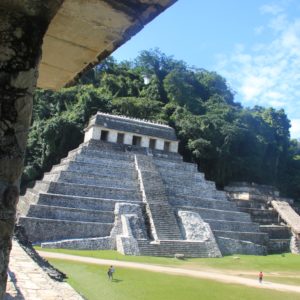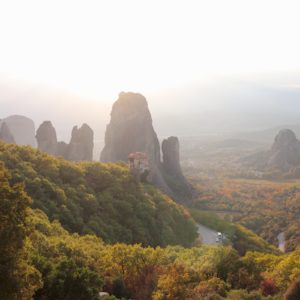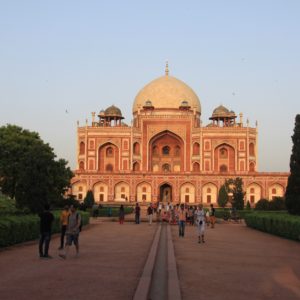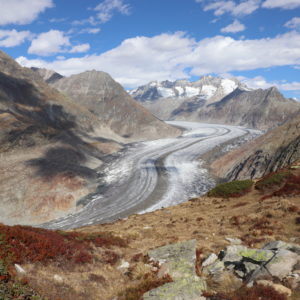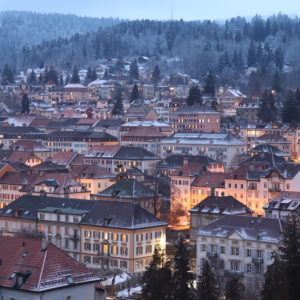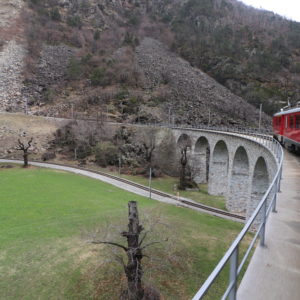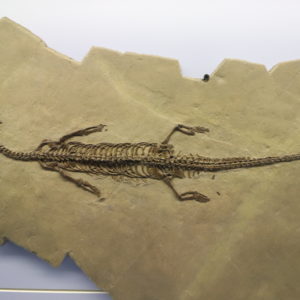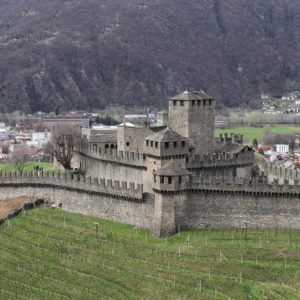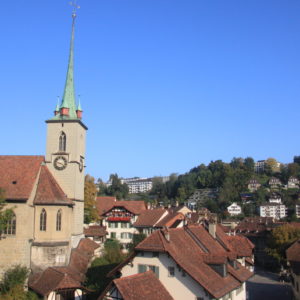Nouvelle
World Heritage Day 2022
International Day for Monuments and Sites
In 1982, the International Council on Monuments and Sites (ICOMOS) established 18 April as the International Day for Monuments and Sites, also known as World Heritage Day, followed by UNESCO’s adoption during its 22nd General Conference, the same year.
Each year, on this occasion, ICOMOS proposes a theme for activities to be organized by its members, ICOMOS National and International Scientific Committees, Working Groups and partners, and anyone who wants to join in marking the Day. This year, the theme is Heritage and Climate.
World Heritage Sites
A World Heritage site is a landmark or area with legal protection by an international convention administered by the United Nations Educational, Scientific and Cultural Organisation (UNESCO). World Heritage sites are designated by UNESCO for having cultural, historical, scientific or other forms of significance. The sites are judged to contain « cultural and natural heritage around the world considered to be of outstanding value to humanity (OUV) ».
To be selected, a WHS must be a somehow unique landmark that is geographically and historically identifiable and have special cultural or physical significance. For example, they might be ancient ruins or historical structures, buildings, cities, deserts, forests, islands, lakes, monuments, mountains, or wilderness areas. A World Heritage site may signify a remarkable accomplishment of humanity, and serve as evidence of our intellectual history on the planet, or it might be a place of great natural beauty.
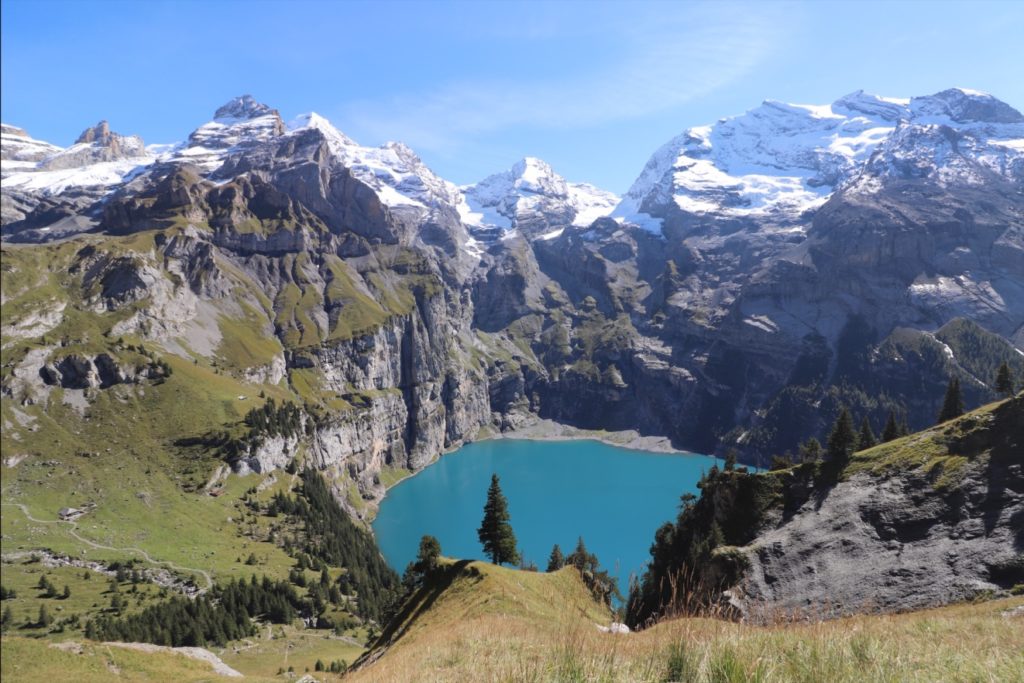
Oeschinen Lake, © Pablo Arturo López Guijosa, UNEP/GEN
As of April 2022, a total of 1,154 World Heritage Sites (897 cultural, 218 natural, and 39 mixed properties) exist across 167 countries; the countries with the most sites are Italy (58), China (56), Germany (51), France (49), Spain (49), India (40), Mexico (35), the United Kingdom (33) and Russia (30).
| ZONE/REGION | CULTURAL | NATURAL | MIXED | TOTAL | % |
| Africa | 54 | 39 | 5 | 98 | 8.49% |
| Arab States | 80 | 5 | 3 | 88 | 7.63% |
| Asia and the Pacific | 195 | 70 | 12 | 277 | 24.00% |
| Europe and North America | 468 | 66 | 11 | 545 | 47.23% |
| Latin America and the Caribbean | 100 | 38 | 8 | 146 | 12.65% |
| TOTAL | 897 | 218 | 39 | 1,154 | 100% |
World Heritage List
The World Heritage sites are intended for practical conservation for posterity, which otherwise would be subject to risk from human or animal trespassing, unmonitored, uncontrolled or unrestricted access, or threat from local administrative negligence. Sites are demarcated by UNESCO as protected zones.
The list is maintained by the international World Heritage Program administered by the UNESCO World Heritage Committee, composed of 21 « state parties ». The programme catalogues, names, and conserves sites of outstanding cultural or natural importance to the common culture and heritage of humanity.
The programme began with the « Convention Concerning the Protection of the World’s Cultural and Natural Heritage« , which was adopted by the General Conference of UNESCO on 16 November 1972. Since then, 193 state parties have ratified the convention, making it one of the most widely recognised international agreements and the world’s most popular cultural programme.

Bursa World Heritage emblem, © Pablo Arturo López Guijosa, UNEP/GEN
Advisory Bodies
ICCROM
The International Centre for the Study of the Preservation and Restoration of Cultural Property (ICCROM) is an intergovernmental organization working in service to its Member States to promote the conservation of all forms of cultural heritage, in every region of the world. Working at the international and governmental levels, and with institutions and professionals on the ground, the organization engages and informs new generations of professionals and the general public with an interest in heritage.
ICCROM’s mission is to provide Member States with the best tools, knowledge, skills and enabling environment with which to preserve their cultural heritage in all of its forms, for the benefit of all people. It achieves this by:
- Studying and promoting cultural heritage conservation;
- Mobilizing and coordinating expertise to address critical issues of conservation;
- Providing the training and research tools for implementation to strengthen the professional community.
ICOMOS
The International Council on Monuments and Sites works for the conservation and protection of cultural heritage places. It is the only global non-government organisation of this kind, which is dedicated to promoting the application of theory, methodology, and scientific techniques to the conservation of architectural and archaeological heritage. It is a network of experts that benefits from the interdisciplinary exchange of its members, among which are architects, historians, archaeologists, art historians, geographers, anthropologists, engineers and town planners. The members of ICOMOS contribute to improving the preservation of heritage, the standards and the techniques for each type of cultural heritage property: buildings, historic cities, cultural landscapes and archaeological sites.
IUCN
The International Union for Conservation of Nature (IUCN) is the official advisor on nature to the UNESCO World Heritage Committee. IUCN evaluates sites nominated for the World Heritage List and monitors the state of conservation of listed sites. IUCN aims to improve the management of World Heritage sites and enhance the role of the World Heritage Convention in nature conservation and sustainable development.
Heritage & Climate
ICOMOS declared the Cultural Heritage and the Climate Emergency in 2020, recognising the potential of cultural heritage to enable inclusive, transformative and just climate action through the safeguarding of all types of cultural heritage from adverse climate impacts, the implementation of risk-informed disaster responses, delivering climate-resilient sustainable development; and this from a perspective of equity and justice.
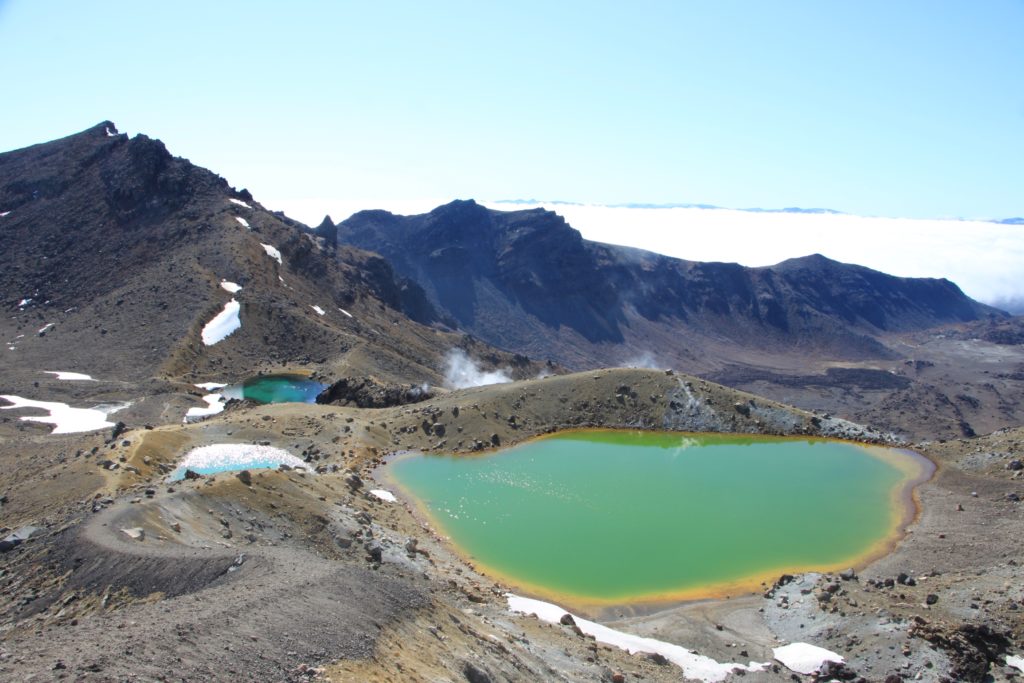
Tongariro cultural landscape, © Pablo Arturo López Guijosa, UNEP/GEN
This General Assembly Resolution 2020 includes working in solidarity with Indigenous Peoples, vulnerable and frontline communities; driven by participatory climate governance; gender-responsive human rights, and rights-based approaches that contribute to transformative change, enable climate adaptation, and deliver climate-resilient pathways to strengthen sustainable development.
The ‘Future of our Pasts’ report, published by ICOMOS in 2019, calls for solidarity between heritage professionals and those communities most affected by, or least able to bear the cost of, climate change. Solidarity must form the basis of the actions that we take in this decade in our race to Climate Justice and Equity, and the achievement of the Sustainable Development Goals.
Climate Justice and Equity are central to the ongoing discourse concerning the intersections of climate change and heritage:
Inter-generation equity requires that all people take measures to safeguard and protect Earth’s terrestrial and marine ecosystems, for present and future generations. The interaction of people and Ecosystems is particularly important given the high dependence of one upon the other. Fairness requires attention to principles of Distributive Justice and the notion that the benefits and burdens associated with climate change and its resolution be allocated fairly.
The International Day for Monuments and Sites – 18 April 2022 provides a timely opportunity to showcase strategies to promote the full potential of heritage conservation research and practice to deliver climate-resilient pathways to strengthen sustainable development while advocating for just transitions to low-carbon futures. It is part of the ICOMOS Triennial Scientific Plan 2021-2024 and also supports the 2020 ICOMOS resolution on People-Centred Approaches to Cultural Heritage.
ICOMOS calls on all communities to collaborate through partnerships, inclusive practices, and in cooperation with local governments, the private sector, academia, civil society, Indigenous Peoples and vulnerable communities. Knowledge exchange must be built on a two-way process that acknowledges a plurality of knowledge systems. The selected theme of “Heritage and Climate” offers the opportunity to respond to questions such as how to employ climate justice and equity to protect heritage and the ways in which we may achieve equitable protection of vulnerable communities through climate action while responding to the UN Decade of Action.
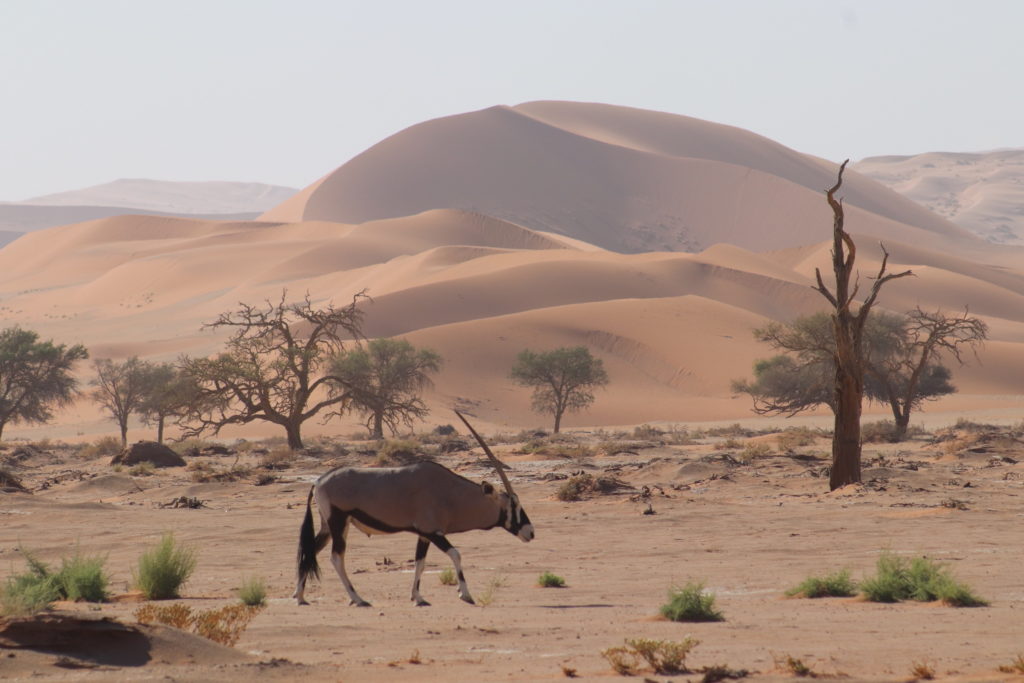
Namib Sand Sea, © Pablo Arturo López Guijosa, UNEP/GEN
World Heritage in Switzerland
Switzerland joined the 1972 World Heritage Convention on 17 September 1975. Since then, 13 sites have been listed as World Heritage:
Cultural (9)
- Abbey of St Gall (1983)
- Benedictine Convent of St John at Müstair (1983)
- La Chaux-de-Fonds / Le Locle, Watchmaking Town Planning (2009)
- Lavaux, Vineyard Terraces (2007)
- Old City of Berne (1983)
- Prehistoric Pile Dwellings around the Alps (2011)
- Rhaetian Railway in the Albula / Bernina Landscapes (2008)
- The Architectural Work of Le Corbusier, an Outstanding Contribution to the Modern Movement (2016)
- Three Castles, Defensive Wall and Ramparts of the Market-Town of Bellinzona (2000)
Natural (4)
- Ancient and Primeval Beech Forests of the Carpathians and Other Regions of Europe (2007, 2011, 2017, 2021)
- Monte San Giorgio (2003, 2010)
- Swiss Alps Jungfrau-Aletsch (2001, 2007)
- Swiss Tectonic Arena Sardona (2008)
World Heritage in Geneva
The « Immeuble Clarté » located in Geneva, is part of the cultural World Heritage property: The Architectural Work of Le Corbusier, an Outstanding Contribution to the Modern Movement, which comprises 17 sites in seven countries. Two of these sites are located in Switzerland, one of them in Rue Saint-Laurent 2-4, 1207 Geneva.
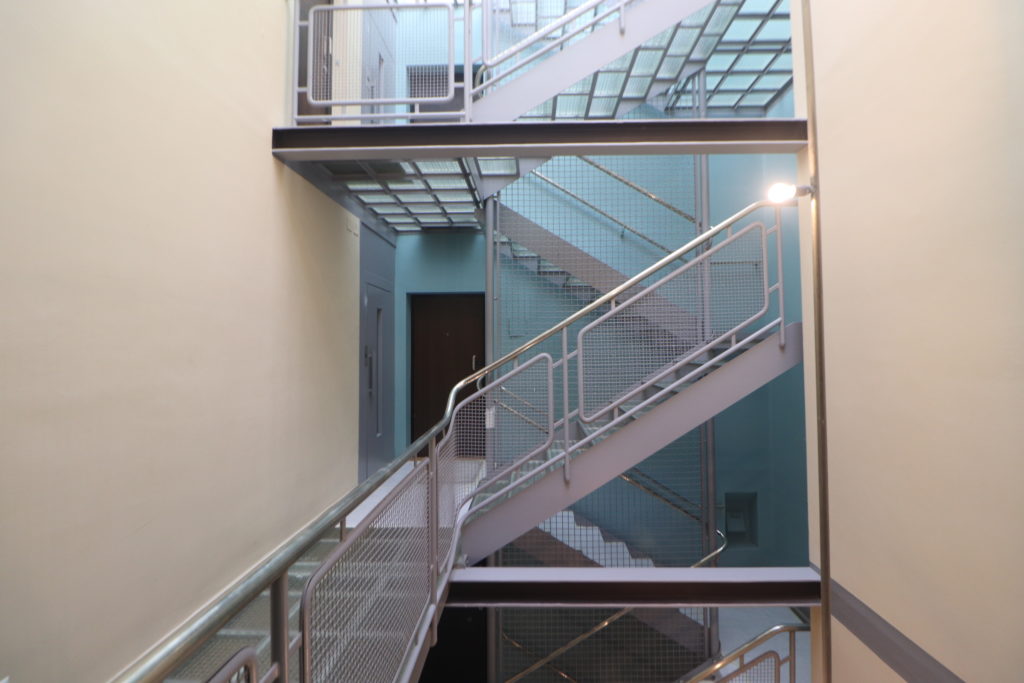
Immeuble Clarté, © Pablo Arturo López Guijosa, UNEP/GEN
Role of Geneva
UNESCO Geneva Liaison Office
The Geneva Liaison Office (GLO) was established in 1979 in order to liaise UNESCO with the United Nations Office at Geneva (UNOG), the UN Specialized Agencies based in Geneva, the UN programmes, funds and organizations and other actors in International Geneva. The Office also develops and maintains cooperation with Swiss-based institutions, like the Swiss National Commission for UNESCO, universities, as well as civil society organizations (NGOs and philanthropic organizations).
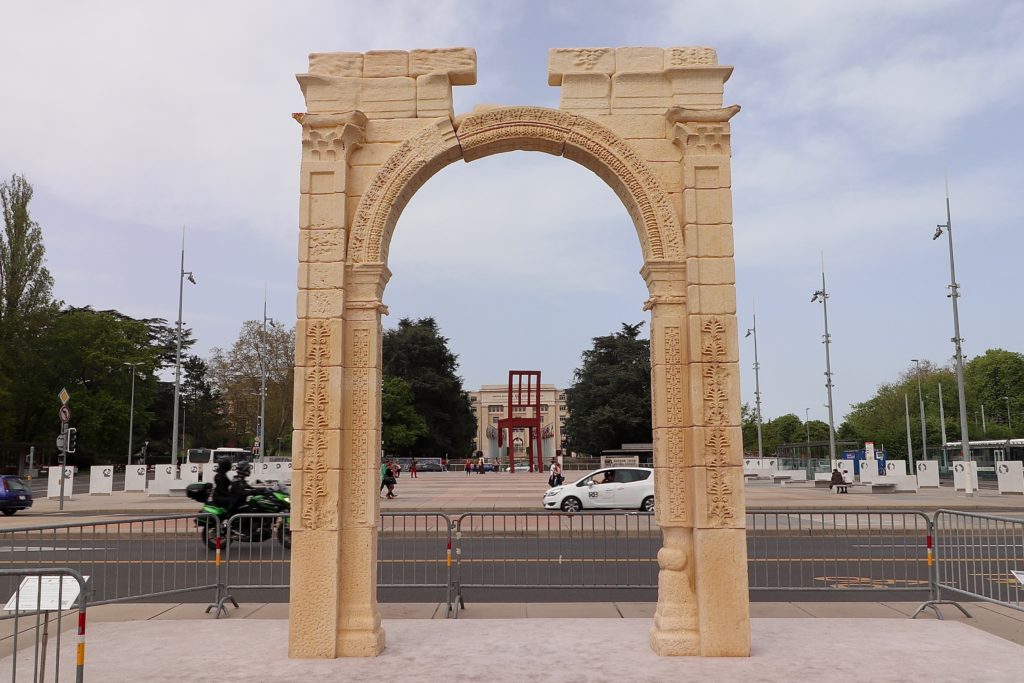
Arch of Palmyra in front of the UNOG, © Pablo Arturo López Guijosa, UNEP/GEN
The Office’s core tasks include:
- representing UNESCO in different inter-governmental and UN inter-agency meetings and to many diverse cooperation platforms in Geneva;
- advocating for UNESCO’s mandate, strategic programme priorities and orientations and acting as a clearinghouse for information of relevance to UNESCO;
- developing new partnerships with UN entities, donors, the private sector and civil society.
The Office focuses on issues related to Human Rights, Education of Migrants and Refugees, Peace, Science and Technology for Development, Post Conflict and Post Disaster Reconstruction, Climate Change, Cultural Heritage, Information Society among others.
IUCN
IUCN Headquarters are located in Gland, part of International Geneva.
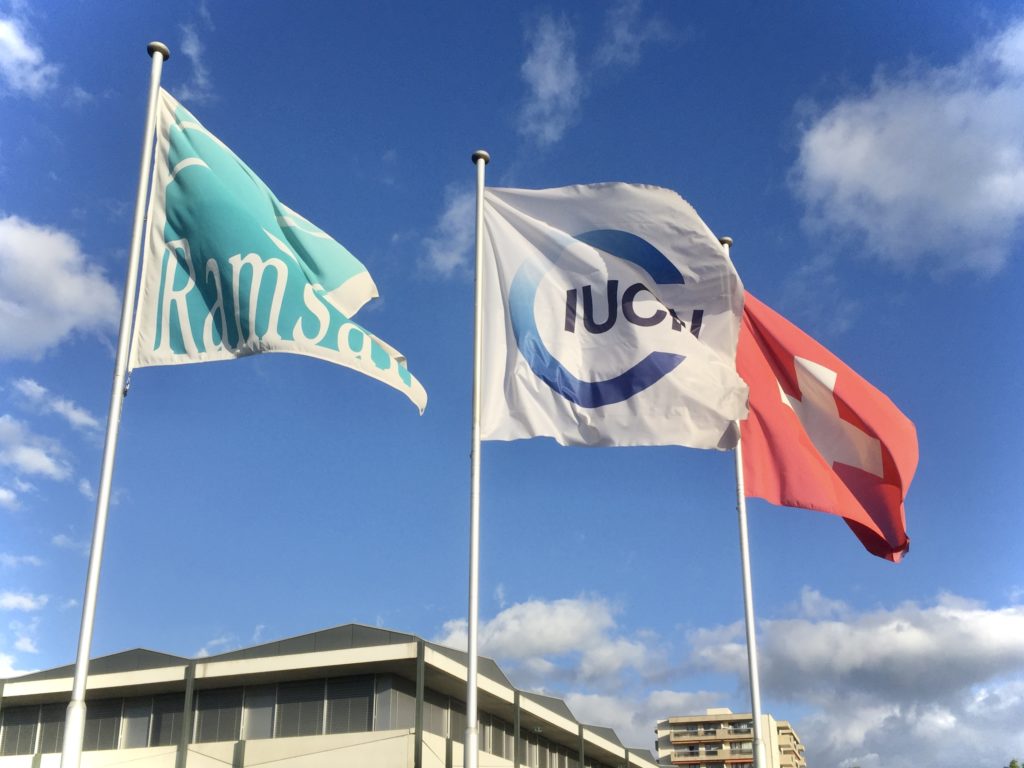
IUCN HQ
ALIPH
The International Alliance for the Protection of Heritage in Conflict Areas (ALIPH) is a Swiss foundation based in Geneva, with the status of an international organization. It is the only global fund exclusively dedicated to the protection and rehabilitation of cultural heritage in conflict zones and post-conflict situations. It was founded in March 2017 in response to the massive destruction in recent years of outstanding, often ancient, cultural heritage, particularly in the Middle East and the Sahel region.
ALIPH finances concrete projects carried out by associations, foundations, academic, cultural and heritage institutions, and international organizations. Projects financed by ALIPH target monuments and sites, museums and their collections, documents, archives and manuscripts, and intangible heritage. Projects may be carried out prior to a conflict to limit the risk of destruction, during a conflict to ensure the security of heritage, or in post-conflict contexts to enable populations to once again enjoy their cultural heritage.
Climate Change in Geneva
The City of Geneva is not exempt from climate change. Committed to sustainable development since 2001, it has decided to implement an action plan to make the general public aware of this major issue of the 21st century. The programme includes providing information, promoting local initiatives, organising events and sharing experiences.
Learning
Resources
- Convention Concerning the Protection of the World Cultural and Natural Heritage | UNESCO | 16 November 1972
- World Heritage List | UNESCO WHC
- World Heritage | IUCN
- Climate Change and World Heritage | UNESCO WHC
- World Heritage Outlook | IUCN
- UNESCO World Heritage in Switzerland | World Heritage Experience Switzerland
- Climate Action from Glasgow to Geneva | UN Climate Change Conference COP26 | Geneva Environment Network



